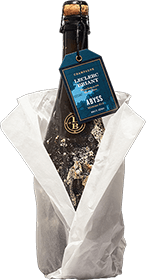Location and surface area of the Leclerc Briant vineyard
The Champagne House Leclerc Briant is located in the heart of the village of Epernay.
Covering an area of 14 hectares, the terroir of this Champagne House is essentially composed of Grands Crus and Premiers Crus.
What is the history of the Leclerc Briant Champagne House?
Origins dating from the 19th century
The Champagne House Leclerc Briant dates back to 1872. It was on this date that Lucien Leclerc founded the Leclerc House in the village of Cumières.
A little over a century later, in 1955, the company moved to Epernay. Under the impetus of Bertrand Leclerc, great-grandson of the founder, and his wife Jacqueline Briant, the estate began a trading activity under the name Leclerc Briant. In 1980, the family’s 5th generation is at the head of the estate, under the name of Pascal Leclerc.
Starting a new chapter from 2012
Following Pascal Leclerc’s passing, the estate was acquired in 2012 by Mark Nunnelly and Denise Dupré. This passionate couple, born in the United States, were eager to make this house a standard among fine Champagne producers.
The management of the house is in the trustworthy hands of Frédéric Zeimett, originally from Champagne, who has a wealth of experience in renowned wine institutions such as Chapoutier and Pommery. Renovation was undertaken and the estate gradually extended its vineyard until it reached its current size of 14 hectares. The vineyard is composed of 6 hectares of Pinot Noir and Pinot Meunier and 8 hectares of Chardonnay. The house completes its supplies by buying grapes from a few certified organic wine growers.
All there is to know about the terroir of the Leclerc Briant Champagne House
Location and exposure
The Leclerc Briant Champagne House tends to a terroir composed mainly of Grands Crus (Mailly, Le Mesnil-sur-Oger) and Premiers Crus (Hautvillers, Cumières, Bisseuil, Trépail, Rilly la Montagne, Villers-Allerand).
Located on the Côte des Blancs and on the Montagne de Reims, these vineyards benefit from a rich array of exposures and soils that contribute to the unique signature of each of the House's champagnes.
Geology
The Montagne de Reims owes its uniqueness to its rich and varied geological palette. These soils are made up of minerals, chalk, sand, clay and limestone.
The Côte des Blancs is mainly composed of chalk. The eastern exposure gives the hillsides a natural protection against the west winds.
All these natural conditions give off the nuances of each vineyard.
Climate
The Champagne region benefits from both continental and oceanic climatic influences. As a result, if the sunshine is optimal throughout the summer season, the rainfall is relatively regular depending on the year and the temperature variations recorded are minor.
Growing practices
In Champagne, Leclerc Briant is recognised as one of the pioneers of biodynamic viticulture. Indeed, if the estate has been instilling a respect for the environment since the 1950s, today its entire vineyard is certified in organic and biodynamic farming. Labelled Vegan, the vintages are vinified in a gentle and caring way in order to bring out the purity and dynamics of each terroir and each vintage.
Vinification
Following the harvest, the grapes are transported to the cellar, this estate’s modern architecture. The vinification is carried out in containers whose different materials aim to enhance the nuances and potential of each terroir.
All the wines are then aged in the house's underground cellars, 35 metres below ground.
The style of the wines of the Champagne House Leclerc Briant
Profile of the wines
On the nose, the champagnes of the Leclerc Briant House exude delicious fruity and floral fragrances which, depending on the champagne, blend harmoniously with pastries or spices.
Upon tasting, the mouth reveals a supple structure perfectly combined with a beautiful freshness. The sensation on the palate is deliciously crisp and enfolding, supported by a tamed acidity.
Food and wine pairing
These champagnes can be enjoyed as an aperitif or throughout a meal. Indeed, thanks to their structure and their aromatic richness, each wine will pair with various dishes such as pork, lamb, fish (tuna for example) or cheese.



